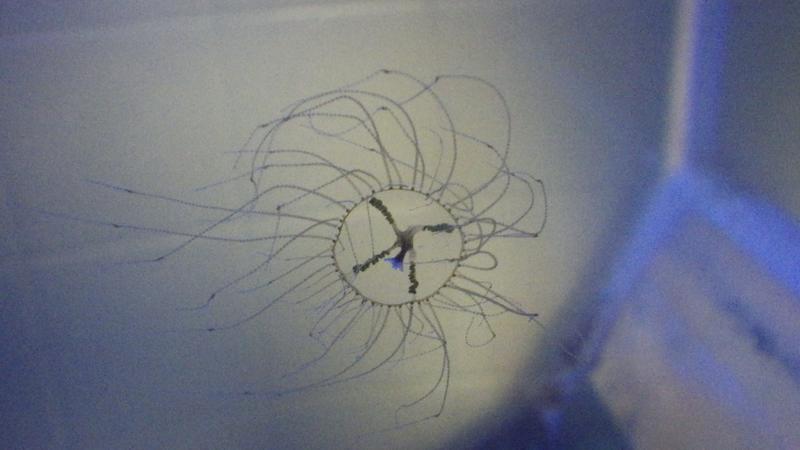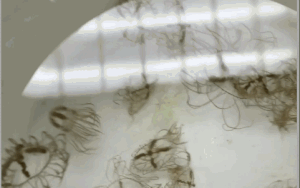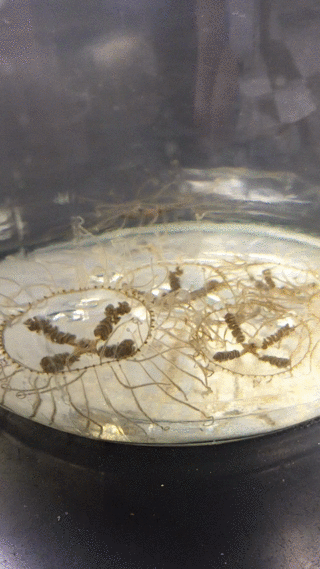
A tiny and venomous jellyfish never before spotted in New Jersey is suddenly turning up in tidal rivers along the Jersey Shore by the dozens.
About four weeks ago, a fisherman out at night on the Manasquan River saw something strange, tiny and nearly clear, pulsing through the water. He scooped it up, and a few days later brought it to Jenkinson's Aquarium in Point Pleasant Beach. Molecular analysis determined it was a clinging jellyfish (Gonionemus vertens).

Clinging Jellyfish in the lab. Video courtesy Dr. Jack Gaynor
"We were really kind of surprised," recalled Jack Gaynor, a molecular biologist at Montclair State University who studies jellyfish. He knows of just one other sighting in the region: last year, on the tip of Long Island. A non-stinging variety had been found near Martha's Vineyard as far back as 1894, but disappeared in the 1930s. None had ever been seen in New Jersey, even though the tidal rivers provide a perfect habitat: shallow water, lots of eel grass.
In the past four weeks, Gaynor and his colleagues have found scores more of the jellyfish in the Shrewsberry and Manasquan rivers.
Their venom can cause numbness, shortness of breath, and severe muscle cramps. To make things worse, the animals are tiny — not much bigger than a dime — and completely transparent except for a little dark cross in the "bell" — the sphere at the creature's center.
"It's a very, very difficult jellyfish to spot," Gaynor said.

The tiny clear creatures can be very hard to spot, especially at night. Video courtesy Dr. Jack Gaynor
The good news is recreational swimmers are not likely to encounter a clinging jelly during the day, but may if they take a dip at night. The jellyfish tend to spend sunlit hours clinging to blades of eel grass (hence the name). But after dark, they float up to the surface to feed.
Despite the jellyfish's sting, Gaynor considers the species to be a ripe subject for research. The venom causes such an intense reaction that it provides an opportunity for scientists to understand how human nerve cells sense pain.
"There might actually be some benefit right to humanity derived from this," Gaynor said."We could be harvesting all sorts of interesting genes and proteins from this particular organism for many years to come."
A Clinging Jellyfish Flouresces under Short Wavelength Blue Light. Jack Gaynor, Montclair State University
